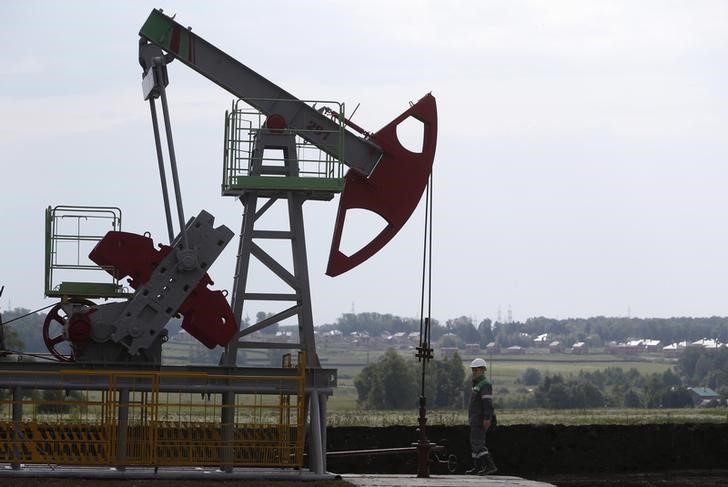Commodities
Oil prices rise for 2nd week as Red Sea tensions offset Angola-led OPEC worries


© Reuters.
Investing.com– Oil prices settled lower on Friday, but notched a second-weekly gain following a volatile trading week as traders weighed supply disruptions driven by attacks on vessels in the Red Sea, while Angola’s exit from the Organization of Petroleum Exporting Countries sparked some concern about OPEC cohesion and its ability to wrangle members to unite behind future production agreements.
At 14:30 ET, fell 0.2% to $73.73 a barrel, while expiring in February fell 0.3% to $79.18 a barrel. Both benchmarks ended the week up 4%.
settles higher for second-straight week
Crude prices wrapped up the day with a second-weekly gain, buoyed by the prospect of supply shortages as attacks by the Iran-aligned Yemeni Houthi group on vessels in the Red Sea saw several oil and shipping firms steer clear of the area.
The move points to potential delays in deliveries arriving through the Suez Canal, especially if the disruptions persist for more than a few weeks.
But sentiment was soured earlier this week as Angola exit from the OPEC raised concerns about the group’s ability to unite behind future production cuts to raise prices. While Angola, which exited the oil producer group following clash on oil production quotas, accounts for a relatively small portion of the cartel’s overall output- about 1.1 million barrels per day (bpd) out of 28 million bpd produced by the whole group, the country’s exit comes amid ongoing jitters about OPEC’s cohesion.
Dollar slip to 5-month lows on cooling inflation offers support
A weaker also offered support to the oil prices following data Friday showing that the PCE, the Fed’s preferred measure of inflation, slowed by more than expected, adding to bets of aggressive rate cuts next year.
The personal consumption expenditures report, the Fed’s primary inflation gauge, for November slowed by 0.1%, taking the annualized rate through November to 2.6%, below expectations of 2.8%.
Investors are now expectations 175 basis points of by the end of next year, taking the Fed funds rate to a range of 3.5% to 3.75% range. That is much more aggressive the three rate cuts for 2024 the Fed projected at its December meeting.
Baker Hughes rig count rises
In a sign the record pace of crude output may be moderating, oilfield services firm Baker Hughe reported its weekly U.S. rig count fell by three to 398. The fall in rig counts come just a day earlier this week showed U.S. production reached a fresh record high.
Commodities
Oil prices rise; U.S. crude inventories plunge, Russia-Ukraine truce eyed
Commodities
India’s Reliance to stop buying Venezuelan oil over US tariffs, sources say
Commodities
Oil prices climb on Venezuela supply worries

 Forex3 years ago
Forex3 years agoForex Today: the dollar is gaining strength amid gloomy sentiment at the start of the Fed’s week

 Forex3 years ago
Forex3 years agoUnbiased review of Pocket Option broker

 Forex3 years ago
Forex3 years agoDollar to pound sterling exchange rate today: Pound plummeted to its lowest since 1985

 Forex3 years ago
Forex3 years agoHow is the Australian dollar doing today?

 Cryptocurrency3 years ago
Cryptocurrency3 years agoWhat happened in the crypto market – current events today

 World3 years ago
World3 years agoWhy are modern video games an art form?

 Commodities3 years ago
Commodities3 years agoCopper continues to fall in price on expectations of lower demand in China

 Economy3 years ago
Economy3 years agoCrude oil tankers double in price due to EU anti-Russian sanctions























